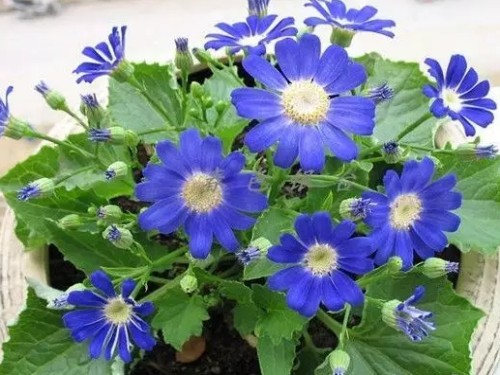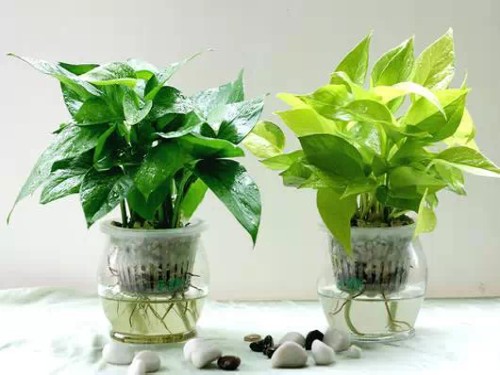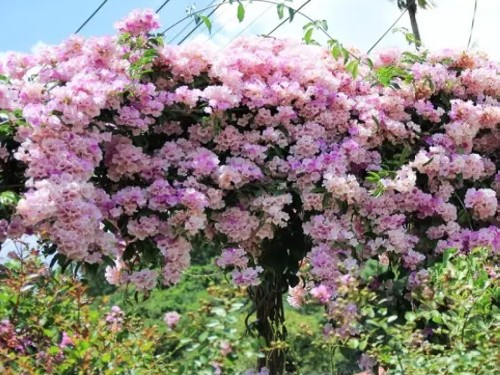Culture methods of potted Chrysanthemum morifolium
Chrysanthemum morifolium is native to the Canary Islands in the Atlantic Ocean and is now widely cultivated in parks or courtyards all over China. Beautiful and colorful flowers and colors, it is a common bonsai flower and ornamental plant decorating the courtyard room. Recently, I saw that many flower friends have bought melon and leaf chrysanthemum. I don't know how to do it, so today the editor will introduce to you the main points of maintenance of melon and leaf chrysanthemum. If you buy this flower, you must take a good look at it.
In order to raise the melon leaf chrysanthemum well and make it rich in ornamental value, we must pay attention to the timely and moderate supply of water and fertilizer during the growth period, give a good environment of ventilation and light transmission, and seriously control diseases and insect pests. Therefore, to raise melon and leaf chrysanthemum well, it is necessary to do the following daily management work.

1. Soil
Melon leaf chrysanthemum likes sandy loam rich in humus and good drainage, avoid drought, afraid of stagnant water, and is suitable for neutral and slightly acidic soil. According to the growth of melon leaf chrysanthemum, melon leaf chrysanthemum likes humus and well-drained sandy soil, so we should choose this kind of soil when buying soil, which is beneficial to the growth of melon leaf chrysanthemum, and the PH value of soil is 6.5-7.5.
2. Lighting
Melon leaf chrysanthemum likes sunshine during the growing period and should not be shaded. Turn the flowerpot regularly so that the branches and leaves receive light evenly and the plant shape is straight and unskewed. After flower wilting, the plant still needs moderate light to adapt to seed development. In the family maintenance, should be placed in the window or south balcony, but because the melon leaf chrysanthemum has obvious phototaxis, every 7 days or so need to turn the basin, that is, the shady side to the sunny side, so as to make the plant type symmetrical, complete and beautiful.
Generally speaking, plants that can have bright flowers are fond of light, and melon-leaf chrysanthemum must also grow in places with sufficient light, but to avoid excessive light, you can see that the leaves of melon-leaf chrysanthemum are very tender, and if the light is too strong, it is easy to cause leaf curl. serious burns the leaves, affecting the ornamental effect. When placed indoors, we should pay attention to changing the direction of the flowerpot, so that the plant can grow evenly and maintain a good ornamental value.
3. Temperature
Gourd leaf chrysanthemum likes warmth but is not tolerant to high temperature, and grows best under the condition of 15-20 ℃. When the temperature is higher than 21 ℃, the overgrowth phenomenon can occur, which is not conducive to the formation of flower buds. When the temperature is below 5 ℃, the growth and development of the plant stops, and the freezing injury occurs when the temperature is below 0 ℃. The suitable temperature for flowering is 10: 15 ℃, which can not open in bud when the temperature is below 6 ℃, and when the temperature is higher than 18 ℃, the flower stem will grow slender and affect the ornamental value.
Melon and leaf chrysanthemum is the representative of Mediterranean climate flowers, which can not tolerate high temperature or low temperature. the suitable temperature for growth is about 15 degrees, and plants more than 20 degrees are prone to overgrowth, affecting the differentiation of flower buds. Therefore, although the melon leaf chrysanthemum is a perennial herb, it is generally cultivated in 2012. Many flower lovers found it when they bought it back, in large part because the indoor temperature was too high and the environment was too muggy.
4. Watering
The leaves of Chrysanthemum morifolium are large and thin, which need to maintain sufficient water, but can not make the basin soil too wet, so it is appropriate to keep the leaves from withering. Usually watering should be determined according to the dry and wet condition of the basin soil, and then irrigate once every 2-3 days. Clear water can be sprayed to the leaf surface once a day, and hot weather can be sprayed twice to reduce the temperature and increase the air humidity. After the emergence of buds, watering should be controlled as much as possible, and the flowering period should be placed in a cool environment of 8-12 ℃, which can prolong the flowering period to 30-40 days.
5. Fertilization
In addition to applying base fertilizer during planting, thin cake fertilizer should be applied every 7-10 days in the growth process, or diluted chemical fertilizer can be used. After the appearance of flower buds, 1-2 times of potassium dihydrogen phosphate could be applied, and fertilization lasted until flowering (stopped in rainy season). If the leaves are contaminated during fertilization, they should be washed in time. Family maintenance, generally buy finished flowers, melon and leaf chrysanthemum flowering period does not need to apply fertilizer, as long as we control the temperature, moisture, light and humidity. Some diluted fertilizer can be applied during the growing period.
Grass and flower plants generally need to keep the basin soil moist. Family care of melon and leaf chrysanthemum needs to maintain sufficient moisture, but not too wet, the pot is definitely not watery. Be careful not to water the flowers and leaves when watering, the indoor ventilated environment is not good enough to cause bacterial infection.
6. Insect pests
The common insect diseases of melon and leaf chrysanthemum are aphids and red spiders. If the damage to aphids and red spiders is more serious, they can be sprayed with 2000 times dimethoate diluent. Because red spiders generally occur on the back of the leaves, and aphids generally occur on the tender top of the chrysanthemum, spraying should focus on the back of the leaves and the top of the plant, and the front of the leaves should also be sprayed properly.
Time: 2019-06-01 Click:
- Prev

How to raise green pineapple in hydroponic culture-the method of hydroponic green pineapple culture
Hydroponic plant is a new way of soilless cultivation of plants. Hydroponic plants like hydroponic green pineapple, which only existed in laboratories or enterprises before, have gradually entered thousands of households. How to raise hydroponic green pineapple? Compared with soil culture, the culture method of hydroponic green pineapple has a lot of details that need to be paid attention to.
- Next

Culture method of garlic vine
Garlic vines, named for the smell of garlic when flowers, leaves and branches are damaged, are often used as flower corridors. When they bloom, they blossom with silver bell-like flowers. When the wind blows, they don't ring, but they smell garlic. And garlic vines are like apricot flowers, the flowers are red at first.
Related
- Fuxing push coffee new agricultural production and marketing class: lack of small-scale processing plants
- Jujube rice field leisure farm deep ploughing Yilan for five years to create a space for organic food and play
- Nongyu Farm-A trial of organic papaya for brave women with advanced technology
- Four points for attention in the prevention and control of diseases and insect pests of edible fungi
- How to add nutrient solution to Edible Fungi
- Is there any good way to control edible fungus mites?
- Open Inoculation Technology of Edible Fungi
- Is there any clever way to use fertilizer for edible fungus in winter?
- What agents are used to kill the pathogens of edible fungi in the mushroom shed?
- Rapid drying of Edible Fungi

